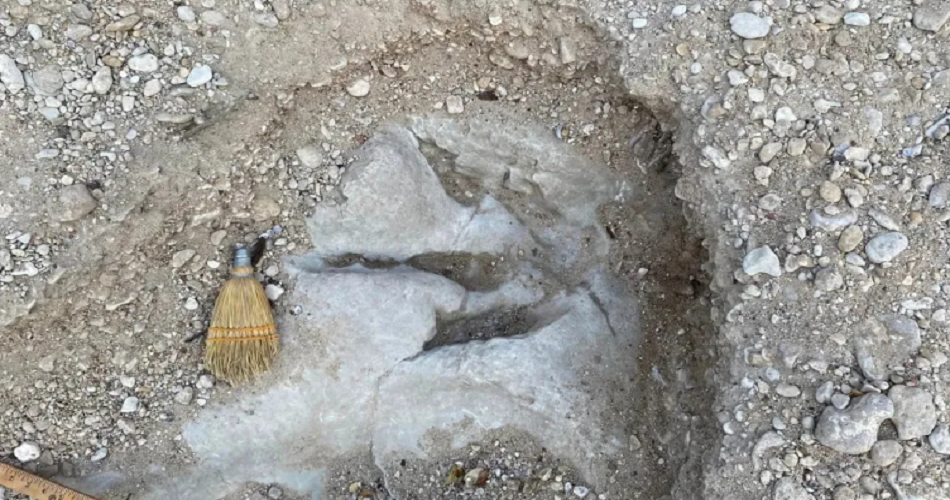Low water levels since June allowed for an incredible discovery.
As Texas went through record heat this summer and a growing drought brought water levels down, a group of volunteers discovered something somewhat magnificent: new giant dinosaur tracks believed to date back some 110 million years.
Paul Baker, store manager at Dinosaur Valley State Park, told CNN that he had “never seen so many dinosaur tracks before.”
“It’s exciting to see something no one else has seen; In a way, it’s almost like a treasure hunt,” said Baker, who helps clean and map dinosaur tracks at the park. “I thought I’d seen all the dinosaur tracks in existence, but in the last couple of years, with the droughts we’ve had and the hard work of our volunteers, it’s just an incredible sight.”



Dinosaur Valley State Park, about an hour and a half south of Dallas, is home to a wealth of dinosaur tracks imprinted by sauropods and theropods that lived in the area approximately 113 million years ago. It is a hotspot for dinosaur enthusiasts and tourists who normally flock to the now dry Paluxy River for fishing, swimming and kayaking.
As water levels dropped this summer, an older story was revealed. A brutal drought has swept across parts of Texas since June, and extreme dryness now covers more than a third of the state, the U.S. Drought Monitor reported Thursday.
“This was the hottest June I’ve ever experienced, and I’m 45 years old now,” Baker said. “I don’t remember the riverbed being destroyed. It’s completely dry.”
In the area where many of the new dinosaur tracks were discovered, Baker said the limestone in the riverbed soared at times as high as 53 degrees Celsius, and the heat is further drying out the soil.
Finding an important piece of paleontological history is something of a silver lining in extreme weather for Glen Kuban, who has been working and writing about dinosaur tracks in and around the Paluxy River in Dinosaur Valley State Park for more than 40 years.
And this year, Kuban’s work focused largely on cleaning up two large sites in the park, known as Ballroom and Denio, where he plans to expand the mapping of the park’s tracks to include those previously buried under mud and water.
They determined that the newly discovered tracks likely belong to two theropod species: an Acrocanthosaurus, which weighed up to 7 tons, and a Sauropodseiden, also known as Paluxysaurus, which weighed about 44 tons.
“It’s important to clarify that drought doesn’t magically reveal tracks in perfect condition,” Kuban told CNN. “Even when the river is dry, the tracks are often under large amounts of gravel, sand and dried mud. It takes many volunteers many days, in this case weeks, to remove the sediment that covers and fills the tracks.”
Last year, Kuban organized a group of volunteers, including members of the Dallas Paleontological Society, Master Naturalists and Friends of Dinosaur Valley State Park, to clean and map the longest dinosaur tail in North America (more than 130 pieces), as well as several nearby tracks. In the meantime, Baker provides them with supplies, equipment and logistical support, while assisting them with the research.
Baker grew up in Dinosaur Valley State Park (his father was a park manager for 30 years) and now operates several businesses, including the park’s gift store. He said helping to discover dinosaur tracks is “very special” and allows him to “give back to a place and a community that I love and helped raise me.”
The drought allowed them to go back in time and chronicle history, but that doesn’t mean the current drought and record temperatures should be discounted, Baker said. As someone who grew up swimming and fishing along the Paluxy River, which has now been drained by the drought, he said it’s a “give and take” situation.
“It’s great to see tracks like this, but I miss the river,” he said. “The Paluxy River is normally a beautiful river.”

